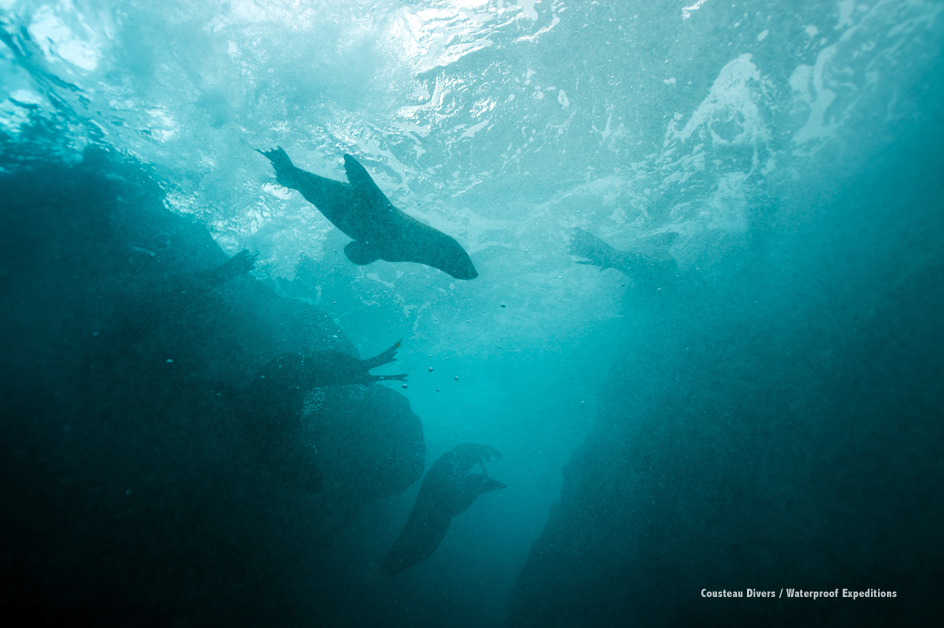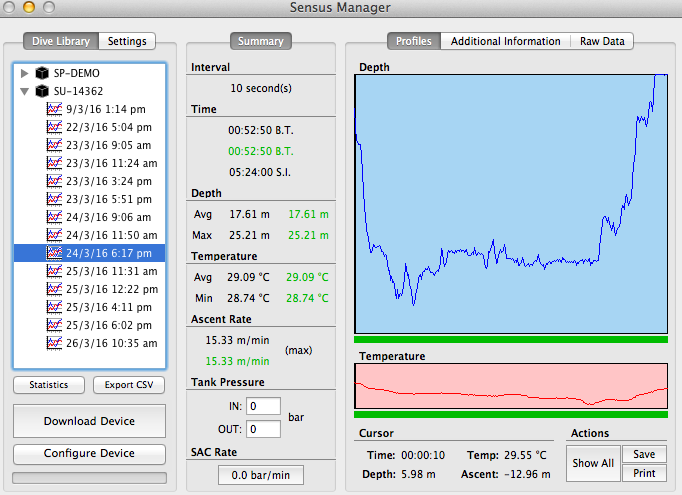Marine Life & Conservation
Pierre-Yves Cousteau’s Galapagos: Dive into the Wild
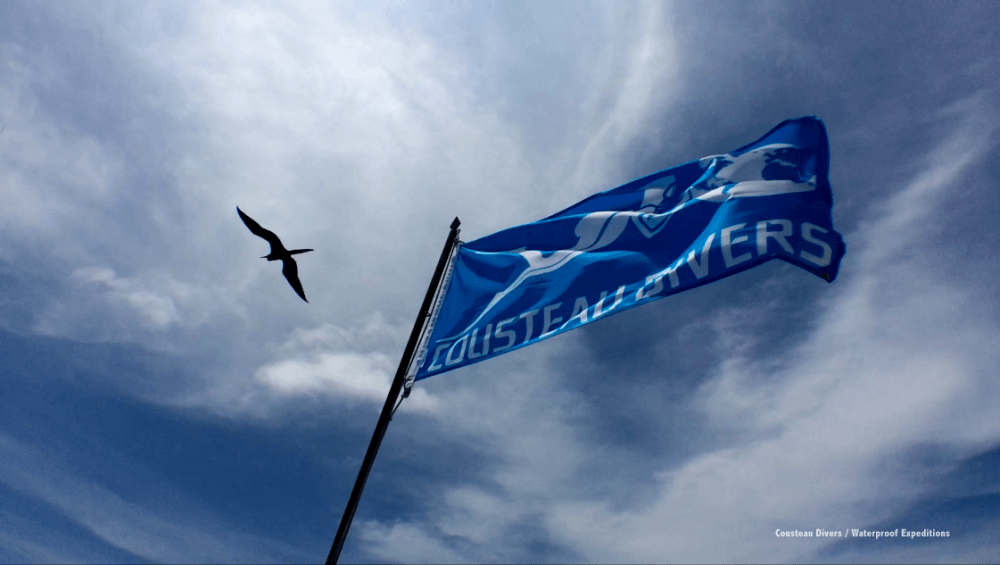
Read Part 1 of Pierre-Yves’ Galapagos blog here.
Ocean, how I missed you.
Wild and free, alive. Still full of promise, mystery and surprise.
A blood moon rises as the Galapagos Sky sets sail to explore the coastal waters of the Galapagos Islands. A variety of passengers, both in nationality and profession, further adds to the rich diversity of the trip. A New-Zealand farmer, a British administrative employee, a Dutch software designer and tester couple, an Indian real-estate developer, a Swiss family, Steve and I… The crew, with their dedication and skill, are the essential ingredient that makes the trip successful. I notice with pleasure that the Galapagos Sky has been “tagged” by my friend Wyland with a beautiful hammerhead mural.
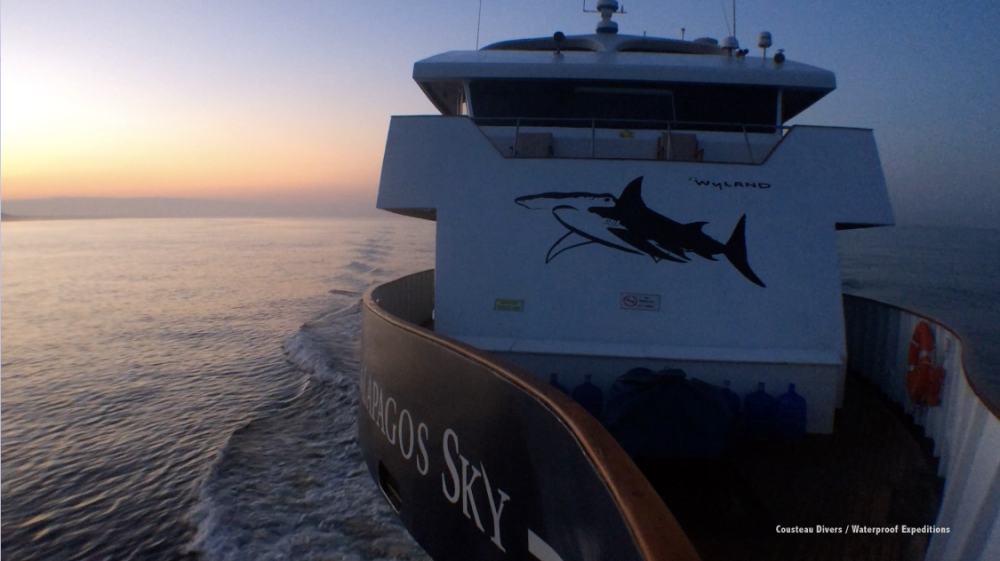
The diving conditions are exceptional. As in exception. Our guides have never had waters so warm, or currents so strong. In principle, neither is a good sign for observing marine life. As the water warms and the thermocline dives deeper, fish who prefer cooler waters stay out of sight. Strong currents mean we had to shoot images using one hand, the other one being busy holding on for dear life to a rock.
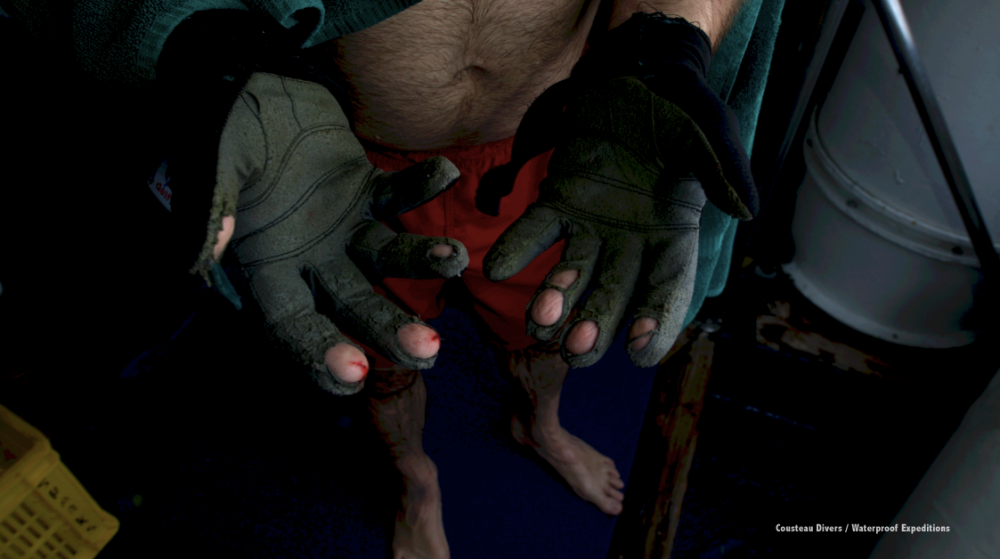
As we dive into another world, we become the invisible witnesses of millions of lives. We enter a universe we still know very little about. We fly among creatures without being able to hear their language. Territory, predation, cooperation, social behavior… We see only what is manifest, when countless unseen codes and gambits are played out in silence. Confused by our bubbly presence, the animals chose to ignore us. They are entirely absorbed in the necessities of every moment, and curiosity is a luxury that few can afford.
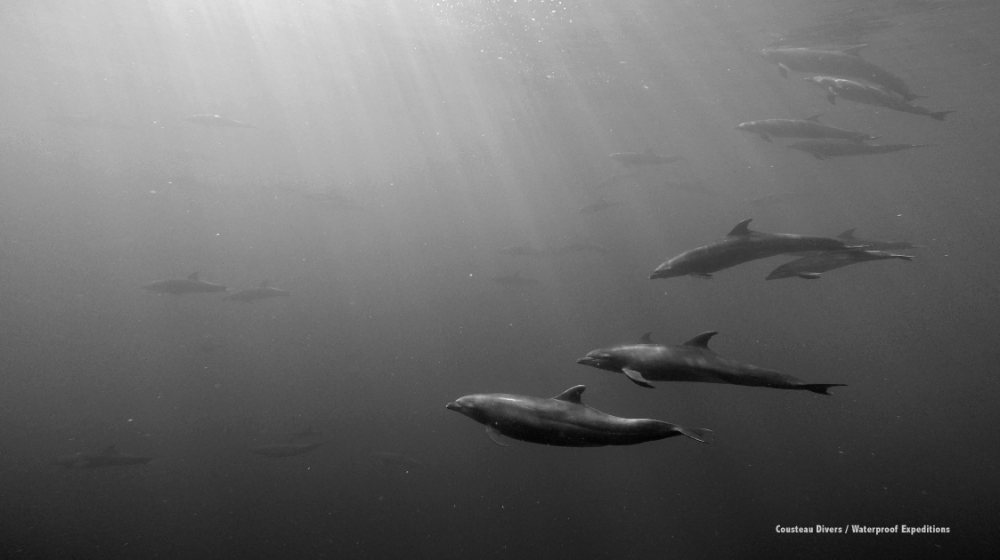

Coming up from one dive Steve and I find ourselves a bit far from the rest of the group, after filming sharks. The sun is setting and the dingy is quite far away, collecting other divers. I am suddenly reminded of our status as strangers in this wilderness. Dangling at the surface above hundreds of sharks I think: we’re perfect prey! I immediately put on my mask and peer down into the thick, dark waters. Just at that moment, a silky shark bolts up from the deep to examine us. After a rapid assessment, it dives back down into the dark blue. Steve and I take turns looking down and hailing the dingy until they pick us up.
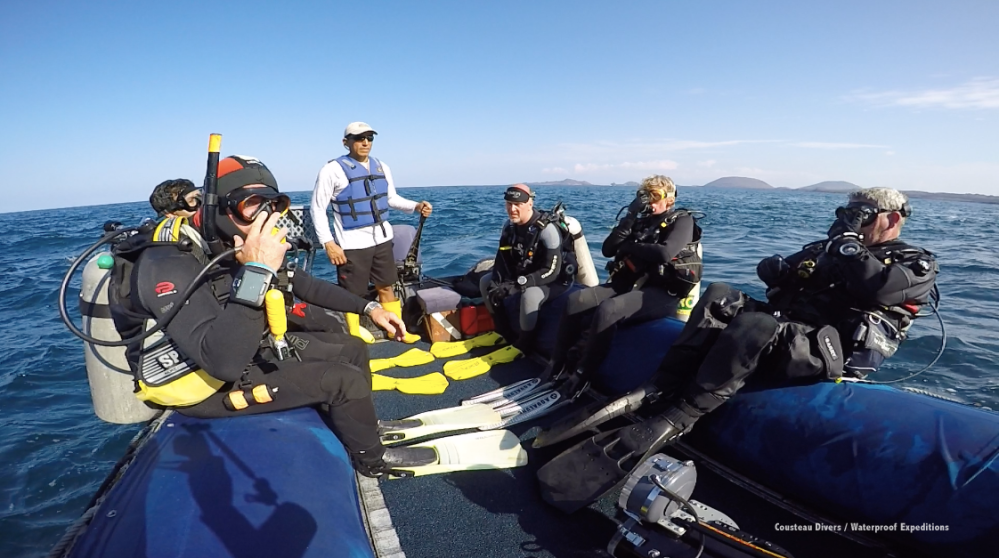
Returning to the Galapagos Sky I am struck by the presence of a dozen dead birds floating around us, their corpses apparently intact. Of the thousands of birds who constantly circle the Island of Darwin, I wonder if this is a natural “skimming” of the weak by competition or by disease. Our guide Jeff explains that these birds have starved or drowned because the thermocline is too deep, and the surface waters are too warm, meaning that the natural prey of these birds have dived deeper than they can reach. (Those familiar with my father’s movies will notice a certain physical resemblance between Jeff and Falco).
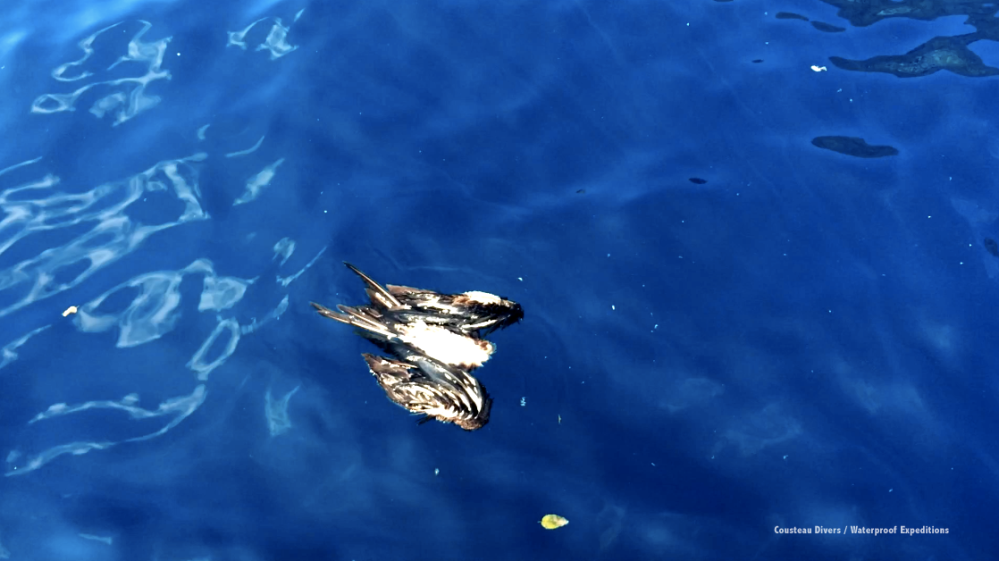
As part of Project Hermes, I’ve been diving with the Sensus Ultra, whose accuracy was tested in the Australian waters of Heron Island by the University of Queensland’s Global Change Institute team. Dive profiles were also recorded from our dive computers. The surface temperatures were a most comfortable and exceptionally warm, 30 degrees Celsius on most dive sites, with often no thermocline down to 30 meters depth. Speaking with Jeff and Max our dive guides of the Galapagos Sky, they’ve never had surface waters so warm.
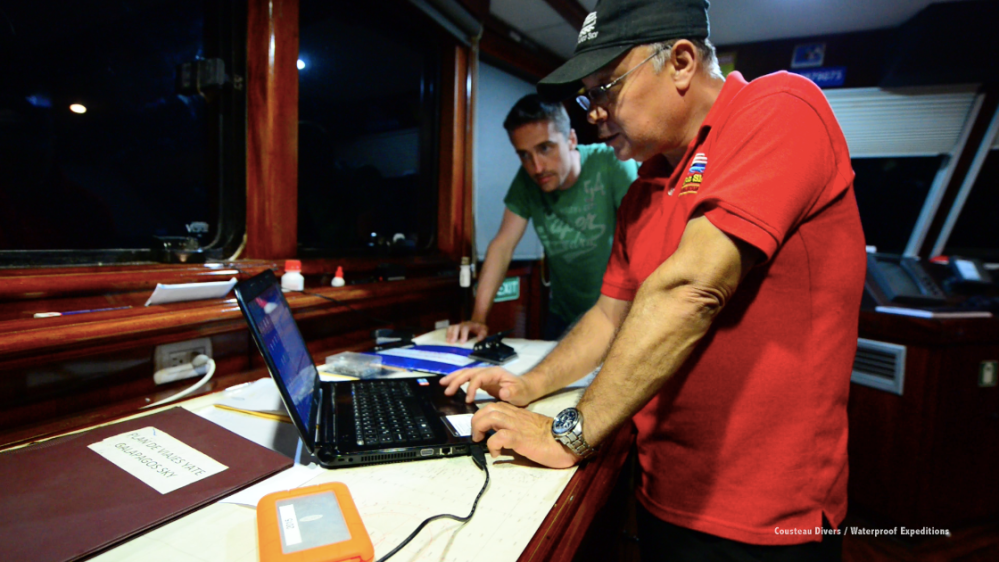
In 2016, you have to travel far in order to witness the miracles of nature in its untamed wilderness. As far as possible from the mega-cities and industrial sprawls. Far from the madness of men and women who constantly obsess about growth, greed and domination. How the underwater world has degraded since the days my father revealed it with his movies… Clearly the situation would be worse if he hadn’t, but also clearly his efforts were insufficient to prevent the decline entirely. Raising awareness can only go so far. For the next expedition to Tahiti with Waterproof Expeditions, in July 2017, I will spend more time searching the Cousteau archives in an attempt to produce before / after visuals as a testimony.
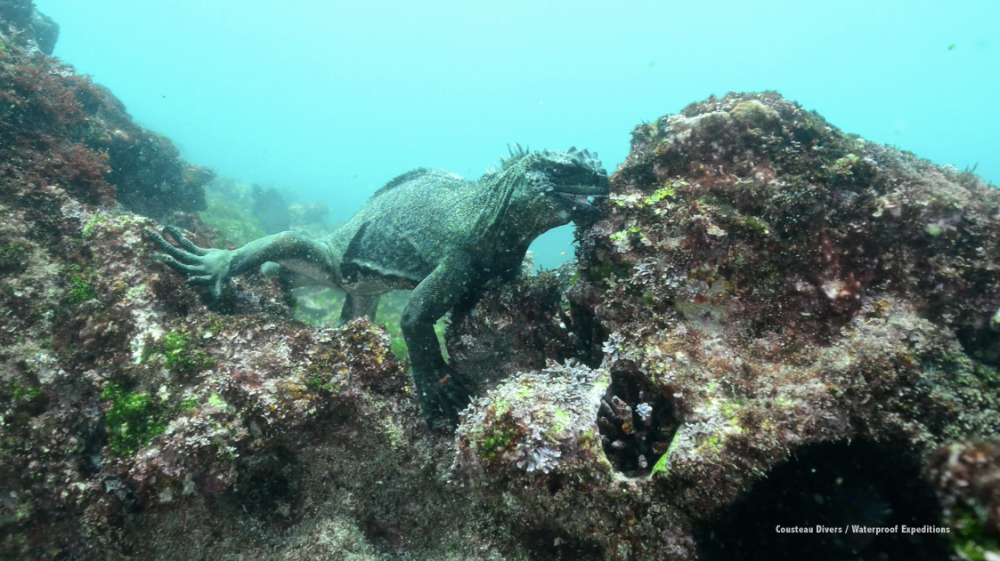
Climate change, habitat degradation, overfishing, plastic pollution… the list of our inconsiderate squandering of the ocean is long, and the Galapagos seem to have been successfully sheltered from these plagues so far. In fact I was delighted to note that I did not encounter a single piece of trash of any size during the week at sea: something I cannot say of any other place I have been in the world. Our guides explain that the National Park has very strict rules for disposal of trash in general and plastic in particular, with efficient collection mechanisms. However, I was saddened to learn that most of the plastic ends up in a landfill, here in the Galapagos. At least the collection is good. Recycling and disposal would be better. An absolute ban on single-use plastics, worldwide, but here in particular, seems necessary.
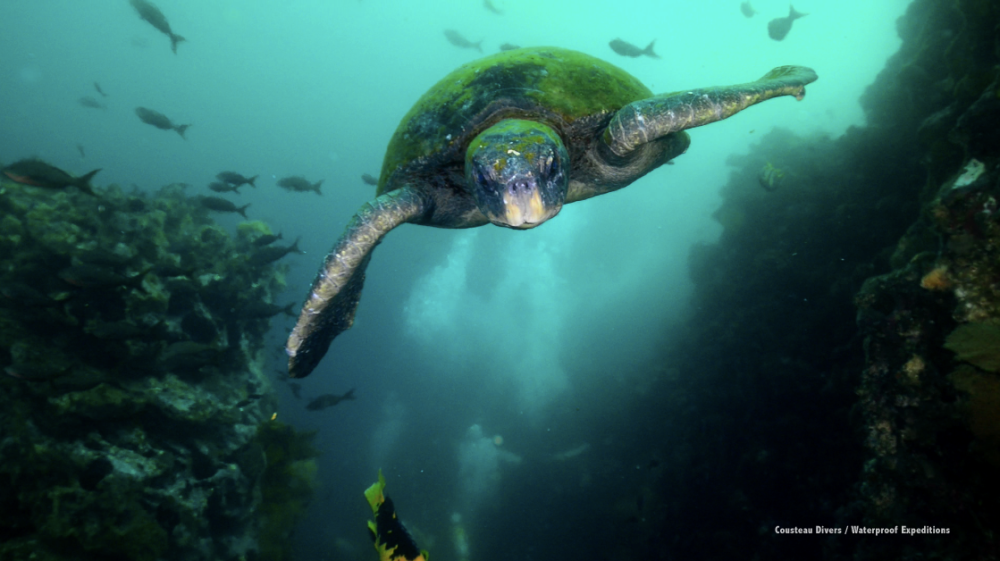
I’ve always wondered if there was a common cause for all this blind destruction. It seems to me that the reason is embedded in our minds: a lack of foresight and understanding of the real costs of our actions. What is referred to in business as “externalities”. I am convinced that sustainable development is possible, but it requires far more brainpower than is currently being used. More innovation, more research, and a shift in subsidies. So why don’t we turn our mind’s eye towards achieving it?
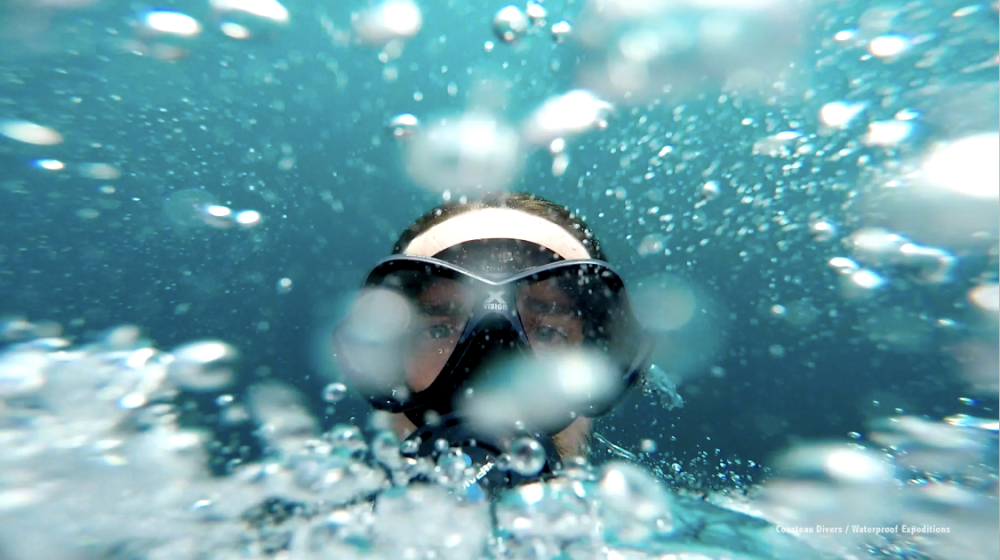
In a recent piece of work I did for IUCN, people were consulted across Europe to identify the main barriers to achieving sustainable development for the sea. Awareness and education came out on top as the most powerful ways to overcome those barriers. However, the social ecosystem itself appeared to be the main blockage in converting that awareness into action. The cultural values and cognitive frameworks that infuse our contemporary societies are diametrically opposite to the ones that would foster environmental stewardship. The obsessions with financial success and personal image prevent us from making the sustainable decision when given equivalent choices.
But how can you appeal to moral duty and self-transcendence when people are struggling to make ends meet, and constantly terrorized by the media into avid conformity? Social sciences are the missing piece of the puzzle for conservation and sustainable development to steer the Titanic of our civilization, and as the environment degrades, so do the options for living outside of the “rat race”. A vicious cycle. We must bring people into the equation of conserving natural resources by appealing to intrinsic values and calling for a transparent examination of the values that we are constantly being bombarded with, mostly by mainstream media and advertisement.
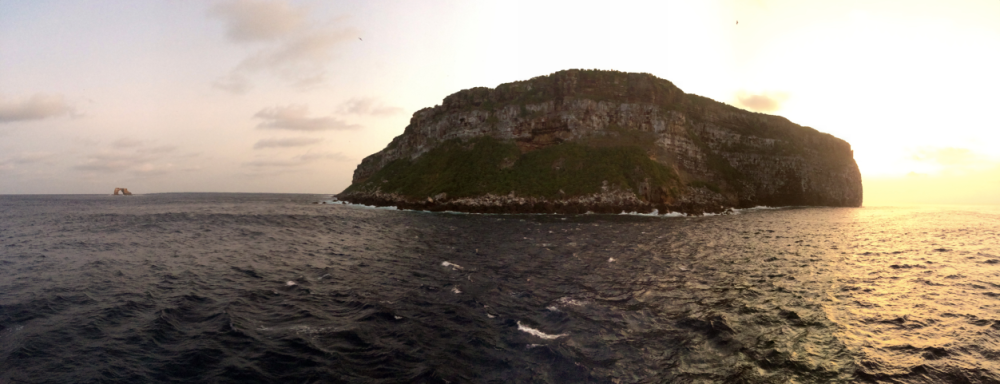
The information I had received prior to my previous blog post was true: the islands of Wolf and Darwin have been given no-take status by the president of Ecuador. This is fantastic news for marine life in these exceptional sites. But it seems the people, the few local fishermen who have always practiced small-scale traditional fishing in that area, were not considered in this process. They demand some kind of compensation, or right to fish in a reduced area between the two islands. In such a remote place, where daily enforcement is practically impossible, it would seem wise to at least consult, if not actively engage the fishermen in the establishment of the protected area. Once again, social sciences have been left aside, and the consequences for the success of the protection remain to be seen. I have interviewed the mayor of San Cristobal and the local fishermen during my time here and will give more detail on this in the next post.

All the images you see here are screenshots from the videos I have been filming. The Big Blue lights have proven to be amazing and incredibly durable. I have not yet managed to cycle through the battery entirely, even by leaving them turned on for two consecutive dives. Next week I will try to shoot some good stills, but I’ve been having some technical problems with my strobes. They fire optically and the housing I have for the camera has an in-built electrical system, which I had no time to replace before the trip. So I use an electrical to optical converter, and that has proven to be a nightmare… firing rather randomly. I plan on piecing together the videos into a mini-documentary for the web, featuring some of Steve’s exceptional high-speed footage. Stay tuned.
~ Pierre-Yves Cousteau
www.waterproof-expeditions.com
For more blogs from Pierre-Yves Cousteau, visit cousteaudivers.wordpress.com.
Blogs
The Ocean Cleanup Breaks 10,000,000 KG Barrier

The Ocean Cleanup, the global non-profit project, has removed a verified all-time total of ten million kilograms (22 million lbs.) of trash from oceans and rivers around the world – approximately the same weight as the Eiffel Tower.
To complete its mission of ridding the oceans of plastic, The Ocean Cleanup uses a dual strategy: cleaning up the Great Pacific Garbage Patch (GPGP) to remove the plastic already afloat in the oceans, while stopping the flow of plastic from the world’s most polluting rivers.
Through cleaning operations in the GPGP and in rivers in eight countries, the cumulative total of trash removed has now surpassed ten million kilograms. This milestone demonstrates the acceleration of The Ocean Cleanup’s impact, while underlining the astonishing scale of the plastic pollution problem and the need for continued support and action.
While encouraging for the mission, this milestone is only a staging point: millions more tons of plastic still pollute our oceans and The Ocean Cleanup intends to continue learning, improving and innovating to solve this global catastrophe.
This announcement comes as governments from around the world meet to continue negotiations to develop a new legally binding instrument to end plastic pollution at INC4 in Ottawa, Canada. Representatives of The Ocean Cleanup will be in attendance and the organization will be urging decision-makers to collaborate towards a comprehensive and ambitious global treaty which addresses plastic at all stages of its life cycle and in all marine environments worldwide, including in areas beyond national jurisdiction.
It is encouraging to see that the need for remediation is reflected in the various options for potential treaty provisions. It is essential that the final treaty contains clear targets for the remediation of legacy plastic pollution, and reduction of riverine plastic emissions.
Tackling plastic pollution requires innovative and impactful solutions. The treaty should therefore incentivize the innovation ecosystem by fostering innovations that make maximal use of data, technology and scientific knowledge – such as those designed and deployed by The Ocean Cleanup.
‘After many tough years of trial and error, it’s amazing to see our work is starting to pay off – and I am proud of the team who has brought us to this point.’ said Boyan Slat, Founder and CEO of The Ocean Cleanup. ‘While we still have a long way to go, our recent successes fill us with renewed confidence that the oceans can be cleaned.’
The Ocean Cleanup was founded in 2013 and captured its first plastic in 2019, with the first confirmed catch in the GPGP coming soon after the deployment of Interceptor 001 in Jakarta, Indonesia. After surpassing one million kilograms of trash removed in early 2022, the non-profit project has since progressed to the third iteration of its GPGP cleaning solution, known as System 03, and a network of Interceptors currently covering rivers in eight countries, with more deployments set for 2024.
About The Ocean Cleanup
The Ocean Cleanup is an international non-profit organization that develops and scales technologies to rid the world’s oceans of plastic. They aim to achieve this goal through a dual strategy: stemming the inflow via rivers and cleaning up the legacy plastic that has already accumulated in the ocean. For the latter, The Ocean Cleanup develops large-scale systems to efficiently concentrate the plastic for periodic removal. This plastic is tracked and traced through DNV’s chain of custody model to certify claims of origin when recycling it into new products. To curb the tide via rivers, The Ocean Cleanup has developed Interceptor™ solutions to halt and extract riverine plastic before it reaches the ocean. Founded in 2013 by Boyan Slat, The Ocean Cleanup now employs a broadly multi-disciplined team of approximately 140. The foundation is headquartered in Rotterdam, the Netherlands.
For more information, visit: theoceancleanup.com and follow @theoceancleanup on social media.
Marine Life & Conservation
Steve Backshall to headline Shark Trust’s flagship event: For the Love of Sharks

Join a host of amazing, shark loving, speakers including Steve Backshall and the Shark Trust team for an evening celebrating shark conservation at the Royal Geographical Society in London this November.
Date: 29th November 2024
Time: 6-10pm
Location: Royal Geographical Society, London
Tickets: https://www.sharktrust.org/Event/flos24
The event will be a celebration of all things shark. Those lucky enough to get hold of tickets will hear from engaging guest speakers with a passion for sharks.
The line-up includes (*subject to change if unforeseen circumstances arise)
Steve Backshall: One of television’s busiest presenters, BAFTA award-winning wildlife expert Steve has been passionate about the wild world ever since he was young.
Steve’s impressive TV career has taken him all around the world, investigating a wide array of species and environments. Steve has filmed over 100 hours of children’s wildlife programmes with the BAFTA award winning Deadly 60 franchise and recently, with Sky Nature, for his new series ‘Whale with Steve Backshall’. He has been a patron for the Shark Trust for 10 years.
Simon Rogerson: is a photojournalist specialising in natural history, diving and the sea.
He is editor of SCUBA magazine, the official journal of the British Sub-Aqua Club. Simon started his career as a crime reporter but gravitated towards his ‘less depressing’ interest in underwater exploration, joining the staff of DIVE magazine in 1999. In 2005 he was named ‘Editor of the Year’ in the PPA’s Independent Publishing Awards. Simon also works as a freelance writer, contributing frequently to the Sunday Times and Telegraph, in addition to BBC Wildlife, Esquire, and a host of international diving magazines. He is the author of a book, Dive Red Sea, published by Ultimate Sports. Now based in Berkshire, Simon has been a Patron of the Shark Trust for 20 years.
More speakers to be announced soon. Head to the Shark Trust website to learn more.
The evening will also allow guests the final chance to see the Oceanic 31, shark art exhibition. Some of the artwork will be auctioned/raffled at the event, while the rest will be auctioned online to raise money for the Shark Trust Oceanic Programme.
For the Love of Sharks is an evening with something for everyone who is interested and fascinated by sharks. Join the Shark Trust, their Patrons, Trustees and Staff, along with a host of supporters for this celebration of shark conservation.
For more information or to buy a ticket: https://www.sharktrust.org/Event/flos24
-

 News3 months ago
News3 months agoCapturing Critters in Lembeh Underwater Photography Workshop 2024: Event Roundup
-

 Marine Life & Conservation Blogs3 months ago
Marine Life & Conservation Blogs3 months agoCreature Feature: Swell Sharks
-

 Blogs2 months ago
Blogs2 months agoMurex Resorts: Passport to Paradise!
-

 Gear Reviews3 weeks ago
Gear Reviews3 weeks agoGEAR REVIEW – Revolutionising Diving Comfort: The Sharkskin T2 Chillproof Suit
-

 Blogs2 months ago
Blogs2 months agoDiver Discovering Whale Skeletons Beneath Ice Judged World’s Best Underwater Photograph
-

 Gear Reviews3 months ago
Gear Reviews3 months agoGear Review: Oceanic+ Dive Housing for iPhone
-

 News2 months ago
News2 months agoPADI Teams Up with Wellness Brand Neuro to Drive Ocean Change and Create a Blue State of Mind
-

 Marine Life & Conservation2 months ago
Marine Life & Conservation2 months agoSave the Manatee Club launches brand new webcams at Silver Springs State Park, Florida


